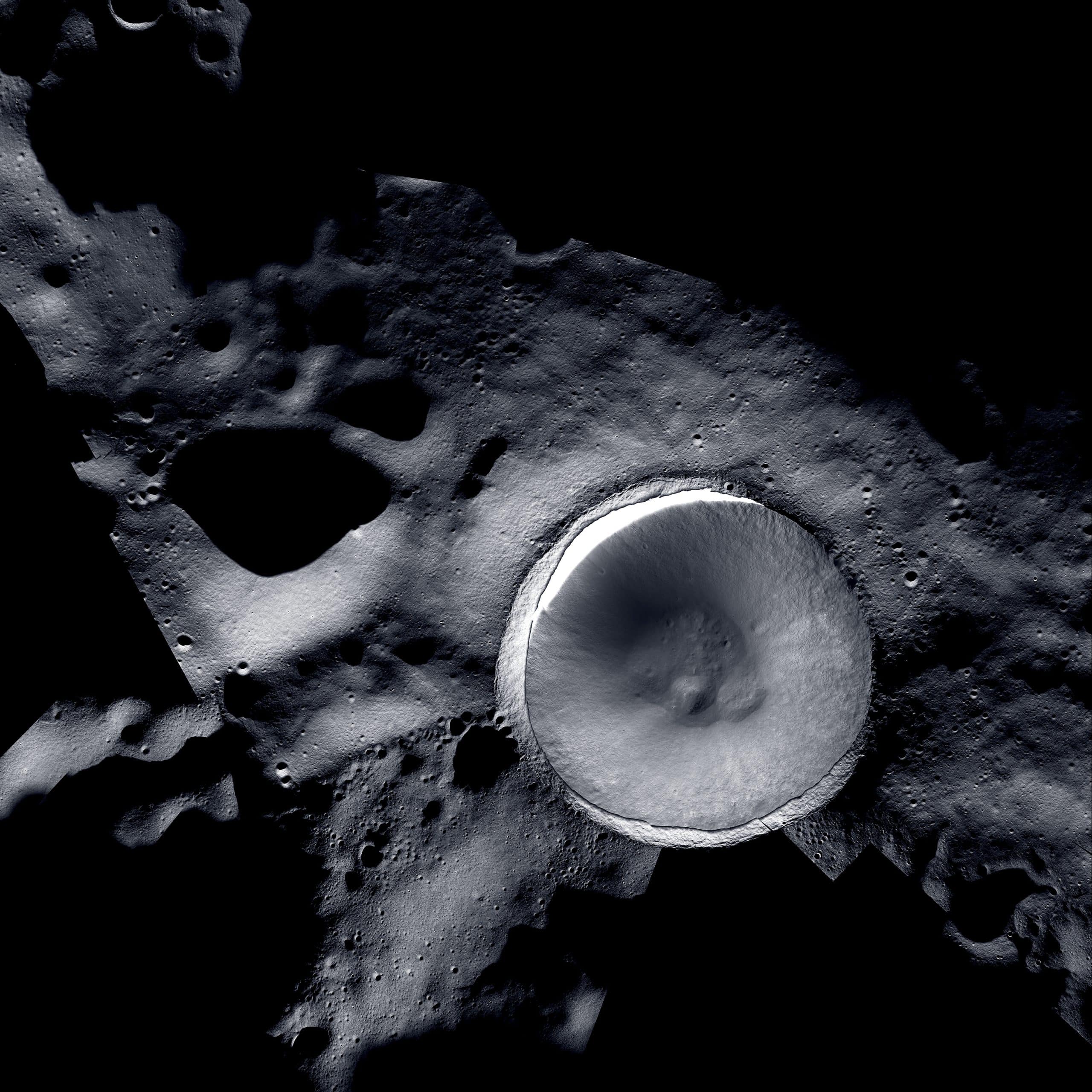By harnessing the combined power of two revolutionary cameras, NASA is providing an in-depth look at the moon’s mysterious South Pole, revealing details never seen before.

Shackleton Crater, a prominent lunar feature, has now been revealed with exceptional clarity thanks to a joint effort by LROC and ShadowCam. LROC, a specialized lunar camera on NASA’s Lunar Reconnaissance Orbiter, has been recording the Moon’s nuances since 2009. Meanwhile, ShadowCam, a collaboration between Malin Space Science Systems and Arizona State University, began its lunar journey aboard KARI. (Korea Aerospace Research Institute), Danuri, in August 2022.
While LROC excels at taking sharp lunar images, it struggles in obscured areas permanently hidden within the Sun’s embrace, the areas are called permanent shadows.That’s where ShadowCam comes into play. With 200 times more light sensitivity than LROC, it captures images professionally in those dark corners. It uses sunlight reflected from features near the moon or even Earth to illuminate these dark corners.
However, its acute sensitivity makes it falter under direct lunar illumination, leading to overexposed images. By marrying the strengths of these two cameras, NASA achieves a balanced and comprehensive map, illuminating both the brilliant and shadowed lunar terrains. For instance, the vivid details within the Shackleton Crater owe their clarity to ShadowCam, while the sun-kissed external areas are LROC’s contributions.

The Lunar South Pole: A Goldmine of Discovery
Thanks to ShadowCam, the invisible realms of the lunar South Pole come to life with unprecedented detail. This area, unexplored by humans, intrigues scientists and researchers. Popular belief is that it is home to ancient ice deposits, perhaps spanning millions or even billions of years. These ice layers, if studied, could reveal the evolutionary history of the Moon and our solar system. Additionally, they could be a treasure trove for future lunar missions, thanks to their potential to provide rocket fuel or vital resources.
A sophisticated map of the moon’s South Pole helps NASA prepare for ambitious future explorations. Missions like VIPER (Volatiles Investigating Polar Exploration Rover) and Artemis could be extremely useful, helping humans familiarize themselves with the lunar surface and even establish an expanded lunar base.






